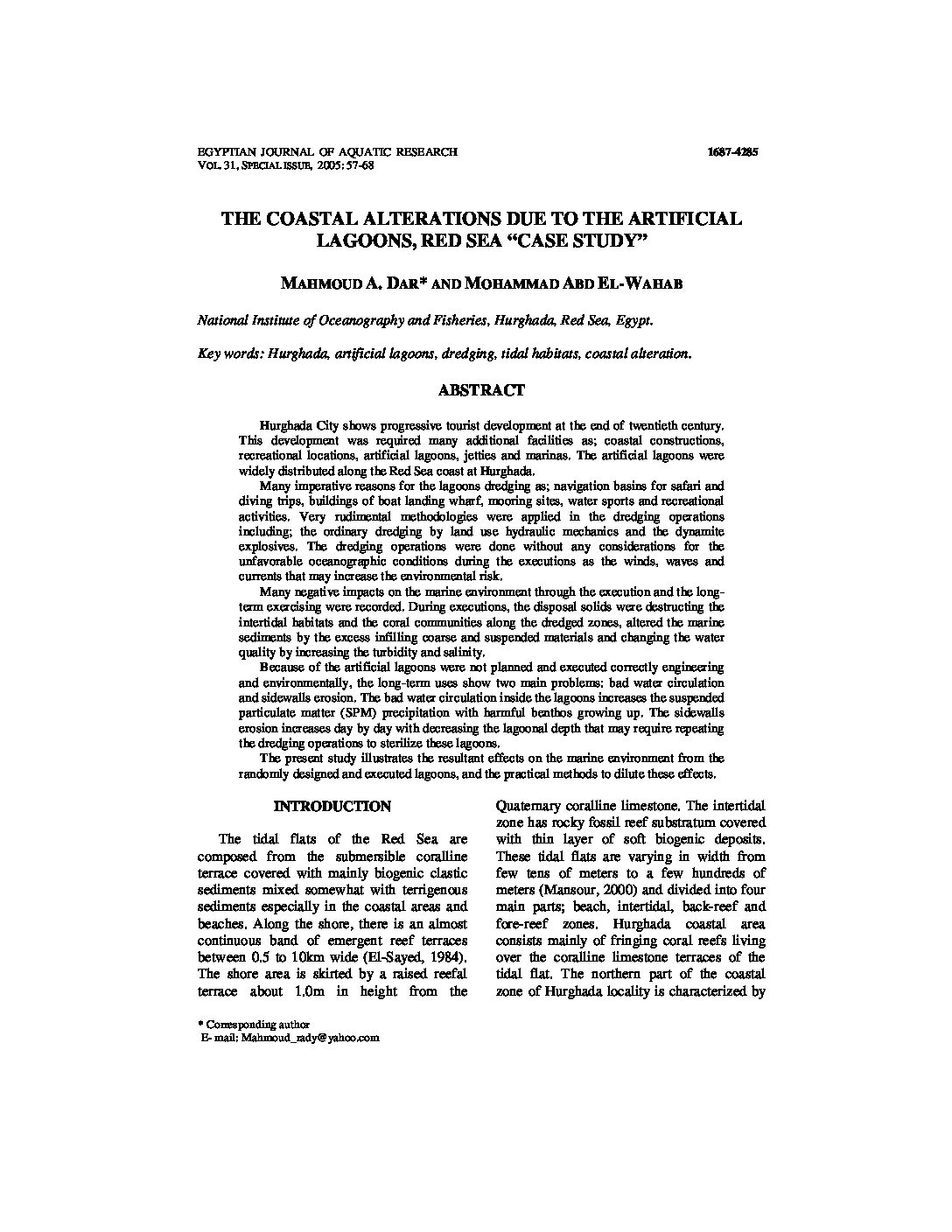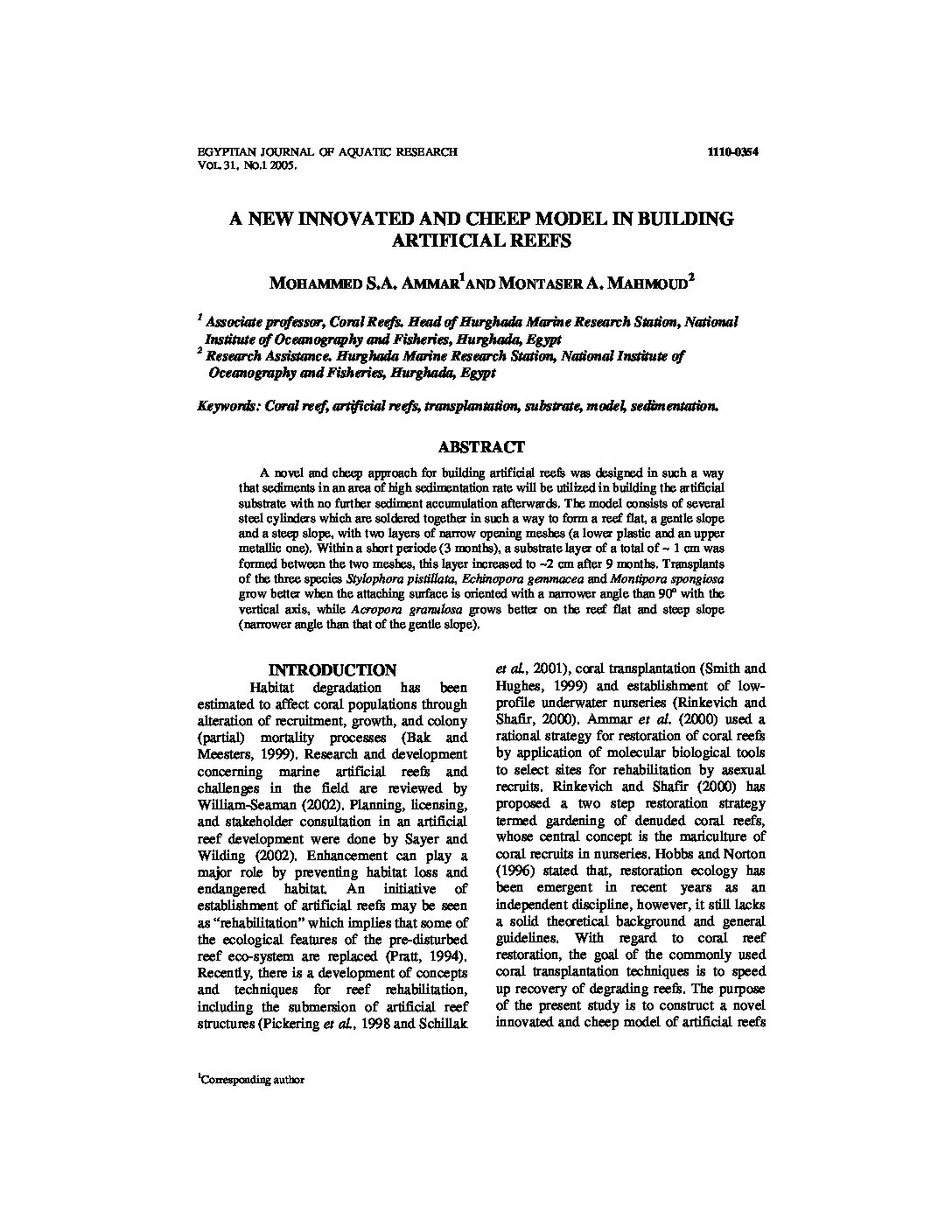Categories
vol-31THE COASTAL ALTERATIONS DUE TO THE ARTIFICIAL
LAGOONS, RED SEA “CASE STUDY”
MAHMOUD A. DAR* AND MOHAMMAD ABD EL-WAHAB
National Institute of Oceanography and Fisheries, Hurghada, Red Sea, Egypt.
Key words: Hurghada, artificial lagoons, dredging, tidal habitats, coastal alteration.
ABSTRACT
Hurghada City shows progressive tourist development at the end of twentieth century.
This development was required many additional facilities as; coastal constructions,
recreational locations, artificial lagoons, jetties and marinas. The artificial lagoons were
widely distributed along the Red Sea coast at Hurghada.
Many imperative reasons for the lagoons dredging as; navigation basins for safari and
diving trips, buildings of boat landing wharf, mooring sites, water sports and recreational
activities. Very rudimental methodologies were applied in the dredging operations
including; the ordinary dredging by land use hydraulic mechanics and the dynamite
explosives. The dredging operations were done without any considerations for the
unfavorable oceanographic conditions during the executions as the winds, waves and
currents that may increase the environmental risk.
Many negative impacts on the marine environment through the execution and the longterm exercising were recorded. During executions, the disposal solids were destructing the
intertidal habitats and the coral communities along the dredged zones, altered the marine
sediments by the excess infilling coarse and suspended materials and changing the water
quality by increasing the turbidity and salinity.
Because of the artificial lagoons were not planned and executed correctly engineering
and environmentally, the long-term uses show two main problems: bad water circulation
and sidewalls erosion. The bad water circulation inside the lagoons increases the suspended
particulate matter (SPM) precipitation with harmful benthos growing up. The sidewalls
erosion increases day by day with decreasing the lagoonal depth that may require repeating
the dredging operations to sterilize these lagoons.
The present study illustrates the resultant effects on the marine environment from the
randomly designed and executed lagoons, and the practical methods to dilute these effects.







